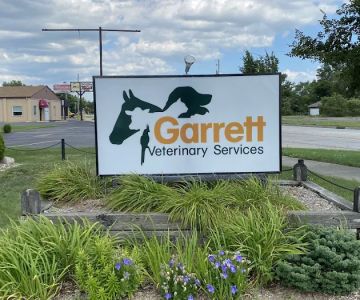A Country Practice: Scenes from the Veterinary Life by Douglas Whynott
If you’ve ever wondered what it’s like to be a veterinarian in a rural area, then Douglas Whynott’s book “A Country Practice: Scenes from the Veterinary Life” will offer you an insightful and touching glimpse into the daily life of a rural vet. As a long-time fan of veterinary stories, I was particularly drawn to Whynott’s ability to tell the often-overlooked stories of rural veterinarians, who not only care for animals but also develop deep relationships with the people and communities they serve.
1. The Charm of Rural Veterinary Life
What sets "A Country Practice" apart from other veterinary books is the focus on rural life and how the profession integrates so seamlessly into the fabric of small-town America. For many of us living in larger cities, the idea of driving through dirt roads to tend to animals may seem unfamiliar. Whynott’s portrayal, however, brings this lifestyle to life, showing the intimate relationship veterinarians develop with their communities. It’s more than just about caring for animals; it’s about being part of a family, sometimes literally as they share in the highs and lows of rural life.
1.1 The Importance of Community Trust
In Whynott’s narrative, the veterinarian’s role is shown to extend far beyond the treatment room. They are trusted advisors, friends, and confidants to farmers, ranchers, and pet owners. In small communities, people often turn to their veterinarians for advice not just about animals but also about life decisions, reflecting the deep bond that is formed through years of service. This unique dynamic is beautifully highlighted in the book as Whynott describes his interactions with the locals, emphasizing the importance of trust and the emotional rewards of rural veterinary practice.
2. Challenges of Rural Veterinary Practice
While being a rural vet offers many rewards, it also comes with its own set of challenges. Whynott does an excellent job of discussing the various obstacles veterinarians face while working in a rural setting, such as the limited resources available and the demanding nature of the job. I was particularly struck by the way Whynott portrays the emotional toll that these veterinarians experience, especially when they must deal with animal injuries, euthanasia, or emergencies without the backup of a large clinic or specialized equipment.
2.1 Limited Resources and Long Hours
One of the biggest challenges rural veterinarians face is the lack of immediate access to specialized equipment and support staff. Whynott paints a vivid picture of how veterinarians in small towns must often be resourceful, making do with what they have. This can mean performing surgeries in less-than-ideal conditions or having to deal with multiple emergency calls in a single day. The book conveys the exhaustion and the high level of skill required to operate a successful practice with limited resources, often on call 24/7.
2.2 Dealing with Emotional Strain
Another key theme in “A Country Practice” is the emotional strain that comes with being a rural vet. With fewer clients and often closer relationships with each animal and family, the emotional weight of their decisions can be heavy. Whynott does an incredible job of capturing the mental and emotional toll that comes with making life-or-death decisions, something that urban vets might not experience as often. The story of a difficult euthanasia, or the heartbreak of treating an animal that’s past the point of recovery, resonates deeply.
3. The Rewards of Veterinary Life
Despite the challenges, Whynott shows that the life of a rural vet is deeply rewarding. The bond formed with animals and their families is a recurring theme throughout the book. What struck me the most was the sense of fulfillment that comes from making a real difference in the lives of both animals and their owners. Whynott recounts numerous stories where his involvement helped ease the pain of pet owners, or saved the life of an animal, offering a true sense of purpose and satisfaction.
3.1 Personal Relationships with Clients
One of the most heartwarming aspects of rural veterinary life is the personal relationships that develop with clients. Whynott describes moments where, through his interactions with clients, he became part of their extended family. This level of trust and connection is rare in urban veterinary practices, where turnover rates and anonymity often make it harder to form long-lasting bonds with clients. The emotional reward of knowing you’ve played a crucial part in someone’s life is something Whynott conveys powerfully throughout the book.
3.2 Satisfaction in Saving Lives
The book also captures the satisfaction rural vets experience when they successfully treat an animal in need. One particularly memorable case in “A Country Practice” details a life-or-death situation where Whynott is able to save an animal using his experience and quick thinking. For many veterinarians, moments like this are the reason they chose their profession in the first place. The joy and relief expressed by the owners when their pets are saved offers a profound sense of purpose.
4. The Connection to the Land
In “A Country Practice,” Whynott goes beyond the traditional role of a vet by illustrating how his work connects him to the land itself. Rural vets often work closely with farmers and ranchers, offering advice on livestock health, breeding, and land management. Whynott’s experience on the farms and ranches, helping with everything from calving to the health of sheep, shows the interdependent relationship between humans, animals, and the environment.
4.1 Providing Guidance to Farmers
One interesting aspect of rural veterinary care is the role veterinarians play as advisors to farmers. Whynott recounts several instances where his expertise not only helped animals but also assisted farmers in making important decisions about their operations. Whether it’s managing a herd’s health or offering insights on improving farming practices, the veterinary role extends far beyond treatment to education and guidance. This added dimension to the profession is one of the aspects that sets rural veterinary life apart from urban practices.
4.2 The Therapeutic Role of Being Outdoors
Another interesting point Whynott touches on is the therapeutic role of working outdoors. In contrast to the sterile, often stressful environment of a clinic, rural veterinarians spend much of their time in open fields or barns, surrounded by nature. This not only provides a refreshing change from the typical workday but also allows veterinarians to develop a deeper appreciation for the land and the animals they serve. It’s an aspect of veterinary work that many city vets might never get to experience.
5. Conclusion: Embracing the Rural Veterinary Life
Reading “A Country Practice: Scenes from the Veterinary Life” by Douglas Whynott has opened my eyes to the unique and rewarding life of rural veterinarians. From the close-knit relationships they develop with clients to the challenges they face in providing care with limited resources, Whynott’s account offers a fascinating glimpse into the heart of veterinary practice. If you’re considering a career in veterinary medicine or just curious about what it’s like to be a vet in a small town, this book is a must-read. It’s a testament to the dedication, compassion, and resilience required to succeed in the field, while also illustrating the deep bond between rural veterinarians and the communities they serve.











